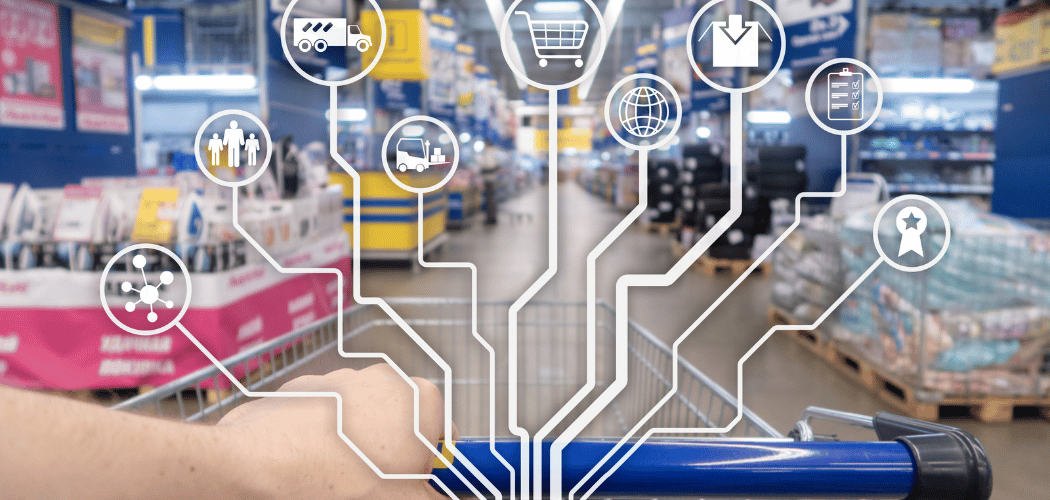Walmart, Target And Amazon Are Returning To Bins. What Does It Resolve?
Retailers like Walmart, Target and Kohl's are sending their returned goods to a new retail outlet: bin stores that resell at deep discounts. Does this solve bigger issues?
By Jenn McMillen
Forget about restocking returned merchandise. Top retailers today are taking their customers’ refunds out to the bins.
Not garbage bins. Rather, retailers such as Walmart, Amazon, Target and others are sending their returned goods to a growing number of steep-discount “bin” stores that are springing up across the country, according to a story in The Washington Post.
“Bin-ging” is big business, turns out. In 2022, consumers refunded $816 billion in purchases, the National Retail Federation reported. That’s a lot of unwanted stuff looking for a home. (For context, Walmart’s 12-month revenue, ending in October 2023, reached $639 billion.)
Bin stores, such as Best Bargain Bin (Fox Lake, Illinois) and UnBox (Brooklyn, New York), buy this stuff directly from retailers or liquidation companies. In doing so, they reduce the losses associated with offloading unwanted merchandise, much of which might otherwise go to landfills. Additionally, they present price-conscious consumers the chance to pay pennies on the dollar for toys, power tools and bar stools while supporting sustainability.
With $816 billion in unwanted merchandise, including “deshopped” goods that were used before being returned, the bin model does present a substantial solution. It also raises important considerations.
Does This Mean There Will be Walbins?
If the bin store concept continues to expand, then at some point the composition of the segment will likely transform from scores of independent operators to a few consolidated chains. Some small chains already exist, including Where Ya Bin, with eight locations across states.
Such consolidation would make sense, as it would reduce overhead costs.
It also could create a highly competitive environment, wherein a few bin chains dominate by offering better deals to retailers. They could pay slightly more for a shipment of returns, for instance, as well as provide more efficient haul-away systems through scale.
This potential raises a couple of important upshots:
- What does the option of bin outlets mean for physical and online retailers such as T.J. Maxx, Burlington Coat Factory and Tuesday Morning, which already sell overstocks?
- While bin stores keep some returned merchandise from entering landfills and save retailers money, they don’t resolve the underlying risk of over-production.
Let’s hash out these two thoughts.
How Bin Stores Can Fit Into The Retail Landscape
As the glut of retail returns rise, the growth of the bin store category is understandable, if not unavoidable. Already, bargain hunters can look up nearby locations, by state, on bin store liquidation maps online.
There are only so many dollars to go around, though, meaning bin outlets present considerable competition to value chains, as well as dollar stores and even secondhand shops such as Goodwill. But here’s the conundrum: Bin stores can serve some of these chains as well, because off-price and outlet retailers have their own returns and overstocks to manage (i.e., get rid of).
Take TJX, the operator of Marshalls, T.J. Maxx, HomeGoods and other nameplates. TJX stores might return their unsold merchandise to manufacturers or distributors, or they might sell it to other liquidators. (In some countries, TJX has programs through which it donates items it hasn’t sold.)
Or, the retailer might throw the items into the trash (which has led some people to Dumpster dive for perfectly good discards, according to a piece in The New York Times).
Enter bin stores. They essentially add one more link to the circle of consumption.
Are Bin Stores An Environmental Band-Aid?
But that circle of consumption is expanding, because retailers – particularly online retailers – have made the option to return so easy, in effect enabling the trend. Even if a retailer requires a minimum purchase amount to get free shipping, consumers could simply add items to reach it, and potentially return them. This ease has encouraged some vexing consumer trends.
Take “bracketing,” the practice of buying several variations of an item, such as multiple sizes of clothing, with the intention of returning the rejects. Or “deshopping,” the act of purchasing something to wear to an event, such as a job interview or party, and then returning it – used. This practice also is known as “wardrobing.”
These behaviors are not the exception. In 2022, 63% of consumers said they had bracketed. And in 2023, 49% of all retailers said their customers returned used merchandise that was not defective, according to the National Retail Federation. Hence, the $816 billion in refunds.
All of which translates to waste. An estimated 5 billion tons of returns are dumped into landfills each year, the return-management company Return Logic reports.
Bin stores can, in some cases, replace dumpsters. (Some bin shoppers call themselves “bin divers.”) The risk is if bin outlets reduce the cost of offloading enough, the underlying issue of overproduction continues, unaddressed.
And there’s so much there that should be addressed.
Reckoning The Center Of The Circle Of Consumption
A key driver behind overproduction is the fear of understocks and losing customers because they can’t find what they need. In other words, the shopper, not the brand or retailer, is at the center of our expanding orbit of consumption.
Which means that shoppers can alter this orbit by limiting their purchases to what they intend to keep. This would occur slowly, with every choice consumers make. New merchandise or used? Return it or conserve it? If retailers and brands make plain the effects of habitual returning, their customers might think twice about doing it.
Until then, retailers must do what they can to maintain a profit and survive while involving their customers. The return bin might become a billion-dollar business, but let’s hope not $816 billion.
This article originally appeared in Forbes.
Forbes.com retail contributor Jenn McMillen is nationally renowned as the architect of GameStop’s PowerUp Rewards, and is Founder and Chief Accelerant of Incendio, a firm that builds and fixes marketing, consumer engagement, loyalty and CRM programs. Incendio provides a nimble, flexible and technology-agnostic approach without the big-agency cost structure and is a trusted partner of some of the biggest brands in the U.S.





